Salesforce Certified MuleSoft Platform Integration Architect 온라인 연습
최종 업데이트 시간: 2025년11월17일
당신은 온라인 연습 문제를 통해 Salesforce Salesforce Certified MuleSoft Platform Integration Architect 시험지식에 대해 자신이 어떻게 알고 있는지 파악한 후 시험 참가 신청 여부를 결정할 수 있다.
시험을 100% 합격하고 시험 준비 시간을 35% 절약하기를 바라며 Salesforce Certified MuleSoft Platform Integration Architect 덤프 (최신 실제 시험 문제)를 사용 선택하여 현재 최신 273개의 시험 문제와 답을 포함하십시오.
정답:
Explanation:
* Semantic Versioning is a 3-component number in the format of X.Y.Z, where: X stands for a major version.
Y stands for a minor version: Z stands for a patch.
So, SemVer is of the form Major.Minor.Patch Coming to our question, minor version of the API has been changed which is backward compatible. Hence there is no change required on API client end. If they want to make use of new featured that have been added as a part of minor version change they may need to change code at their end. Hence correct answer is The API client code ONLY needs to be changed if it needs to take advantage of new features.
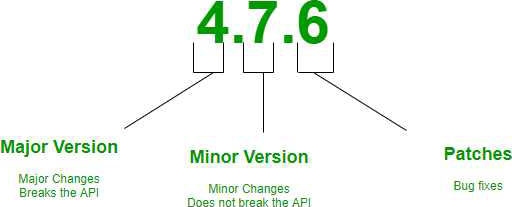
정답:
Explanation:
Before we answer this question, we need to understand what median (50th percentile) and 80th percentile means. If the 50th percentile (median) of a response time is 500ms that means that 50% of my transactions are either as fast or faster than 500ms.
If the 90th percentile of the same transaction is at 1000ms it means that 90% are as fast or faster and only 10% are slower. Now as per upstream SLA, 99th percentile is 800 ms which means 99% of the incoming requests should have response time less than or equal to 800 ms. But as per one of the backend API, their 95th percentile is 1000 ms which means that backend API will take 1000 ms or less than that for 95% of. requests. As there are three API invocation from upstream API, we can not conclude a timeout that can be set to meet the desired SLA as backend SLA's do not support it. Let see why other answers are not correct.
1) Do not set a timeout --> This can potentially violate SLA's of upstream API
2) Set a timeout of 100 ms; ---> This will not work as backend API has 100 ms as median meaning only 50% requests will be answered in this time and we will get timeout for 50% of the requests. Important thing to note here is, All APIs need to be executed sequentially, so if you get timeout in first API, there is no use of going to second and third API. As a service provider you wouldn't want to keep 50% of your consumers dissatisfied. So not the best option to go with.
*To quote an example: Let's assume you have built an API to update customer contact details.
- First API is fetching customer number based on login credentials
- Second API is fetching Info in 1 table and returning unique key
- Third API, using unique key provided in second API as primary key, updating remaining details
* Now consider, if API times out in first API and can't fetch customer number, in this case, it's useless to call API 2 and 3 and that is why question mentions specifically that all APIs need to be executed sequentially.
3) Set a timeout of 50 ms --> Again not possible due to the same reason as above Hence correct answer is No timeout is possible to meet the upstream API's desired SLA; a different SLA must be
negotiated with the first downstream API or invoke an alternative API
정답:
Explanation:
We need to note few things about the scenario which will help us in reaching the correct solution. Point 1: The APIs are all publicly available and are associated with several mobile applications and web applications. This means Apply an IP blacklist policy is not viable option. as blacklisting IPs is limited to partial web traffic. It can't be useful for traffic from mobile application
Point 2: The organization does NOT want to use any authentication or compliance policies for these
APIs. This means we can not apply HTTPS mutual authentication scheme.
Header injection or removal will not help the purpose.
By its nature, JSON is vulnerable to JavaScript injection. When you parse the JSON object, the malicious code inflicts its damages. An inordinate increase in the size and depth of the JSON payload can indicate injection. Applying the JSON threat protection policy can limit the size of your JSON payload and thwart recursive additions to the JSON hierarchy.
Hence correct answer is Apply a JSON threat protection policy to all APIs to detect potential threat vectors
정답:
Explanation:
Object Store Connector is a Mule component that allows for simple key-value storage.
Although it can serve a wide variety of use cases, it is mainly design for:
- Storing synchronization information, such as watermarks.
- Storing temporal information such as access tokens.
- Storing user information.
Additionally, Mule Runtime uses Object Stores to support some of its own components, for example:
- The Cache module uses an Object Store to maintain all of the cached data.
- The OAuth module (and every OAuth enabled connector) uses Object Stores to store the access and refresh tokens.
Object Store data is in the same region as the worker where the app is initially deployed. For example, if you deploy to the Singapore region, the object store persists in the Singapore region. MuleSoft Reference: https://docs.mulesoft.com/object-store-connector/1.1/ Data can be shared between different instances of the Mule application. This is not recommended for Inter Mule app communication. Coming to the question, object store cannot be used to share cached data if it is deployed as separate Mule applications or deployed under separate Business Groups. Hence correct answer is When there is one CloudHub deployment of the API implementation to three workers that must share the cache state.
정답:
Explanation:
Correct answer is Only MuleSoft provided certificates can be used for server side certificate
* The CloudHub Shared Load Balancer terminates TLS connections and uses its own server-side certificate.
* You would need to use dedicated load balancer which can enable you to define SSL configurations to provide custom certificates and optionally enforce two-way SSL client authentication.
* To use a dedicated load balancer in your environment, you must first create an Anypoint VPC. Because you can associate multiple environments with the same Anypoint VPC, you can use the same dedicated load balancer for your different environments.
Additional Info on SLB Vs DLB:
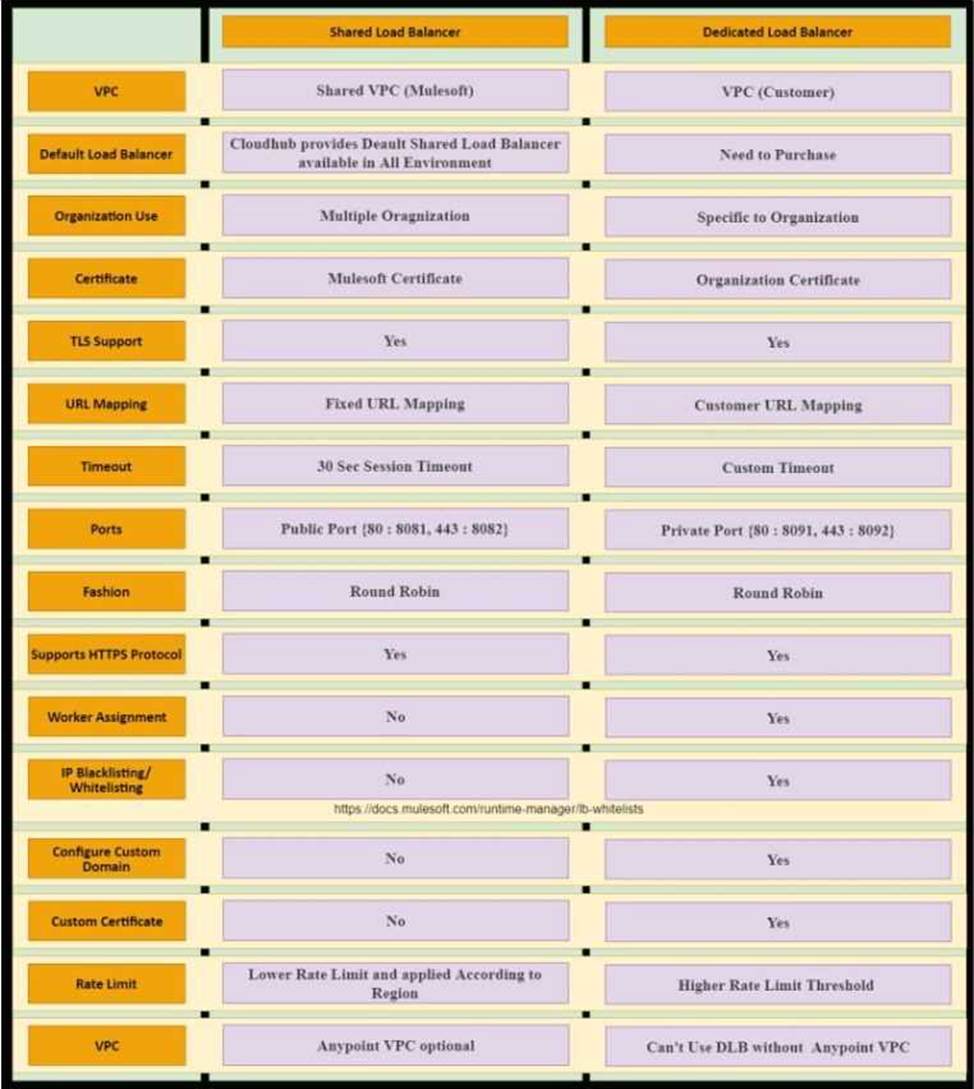
정답:
Explanation:
CloudHub object store should be in same region where the Mule application is deployed. This will give optimal performance.
Before learning about Cache scope and object store in Mule 4 we understand what is in general
Caching is and other related things.
WHAT DOES “CACHING” MEAN?
Caching is the process of storing frequently used data in memory, file system or database which saves processing time and load if it would have to be accessed from original source location every time.
In computing, a cache is a high-speed data storage layer which stores a subset of data, so that future requests for that data are served up faster than is possible by accessing the data’s primary storage location. Caching allows you to efficiently reuse previously retrieved or computed data.
How does Caching work?
The data in a cache is generally stored in fast access hardware such as RAM (Random-access memory) and may also be used in correlation with a software component. A cache’s primary purpose is to increase data retrieval performance by reducing the need to access the underlying slower storage layer.
Caching in MULE 4
In Mule 4 caching can be achieved in mule using cache scope and/or object-store. Cache scope
internally uses Object Store to store the data.
What is Object Store
Object Store lets applications store data and states across batch processes, Mule components, and applications, from within an application. If used on cloud hub, the object store is shared between applications deployed on Cluster.
Cache Scope is used in below-mentioned cases:
● Need to store the whole response from the outbound processor
● Data returned from the outbound processor does not change very frequently
● As Cache scope internally handle the cache hit and cache miss scenarios it is more readable Object Store is used in below-mentioned cases:
● Need to store custom/intermediary data
● To store watermarks
● Sharing the data/stage across applications, schedulers, batch.
If CloudHub object store is in same region where the Mule application is deployed it will aid in fast access of data and give optimal performance.
정답:
Explanation:
Types of logging:
A) Synchronous: The execution of thread that is processing messages is interrupted to wait for the log message to be fully handled before it can continue.
● The execution of the thread that is processing your message is interrupted to wait for the log message to be fully output before it can continue
● Performance degrades because of synchronous logging
● Used when the log is used as an audit trail or when logging ERROR/CRITICAL messages
● If the logger fails to write to disk, the exception would raise on the same thread that's currently processing the Mule event. If logging is critical for you, then you can rollback the transaction.
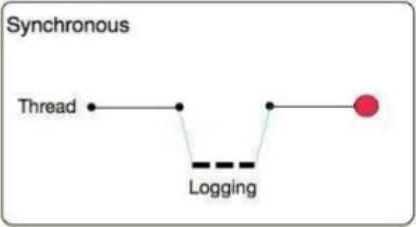
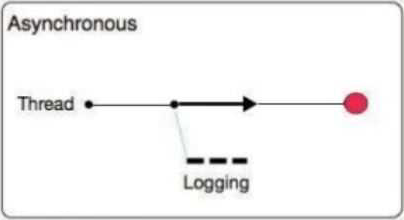
B) Asynchronous:
● The logging operation occurs in a separate thread, so the actual processing of your message won’t be delayed to wait for the logging to complete
● Substantial improvement in throughput and latency of message processing
● Mule runtime engine (Mule) 4 uses Log4j 2 asynchronous logging by default
● The disadvantage of asynchronous logging is error handling.
● If the logger fails to write to disk, the thread doing the processing won't be aware of any issues writing to the disk, so you won't be able to rollback anything. Because the actual writing of the log gets differed, there's a chance that log messages might never make it to disk and get lost, if Mule were to crash before the buffers are flushed.
So Correct answer is: Asynchronous logging can improve Mule event processing throughput while also reducing the processing time for each Mule event
정답:
Explanation:
Key to this question lies in the fact that Process API are not meant to be accessed directly by clients. Lets analyze options one by one. Client ID enforcement: This is applied at process API level generally to ensure that identity of API clients is always known and available for API-based analytics Rate Limiting: This policy is applied on Process Level API to secure API's against degradation of service that can happen in case load received is more than it can handle Custom circuit breaker: This is also quite useful feature on process level API's as it saves the API client the wasted time and effort of invoking a failing API. JSON threat protection: This policy is not required at Process API and rather implemented as Experience API's. This policy is used to safeguard application from malicious attacks by injecting malicious code in JSON object. As ideally Process API's are never called from external world, this policy is never used on Process API's Hence correct answer is JSON threat protection MuleSoft Documentation Reference: https://docs.mulesoft.com/api-manager/2.x/policy-mule3-json-threat
정답:
Explanation:
Every Mule application deployed to CloudHub receives a DNS entry pointing to the CloudHub. The DNS entry is a CNAME for the CloudHub Shared Load Balancer in the region to which the Mule application is deployed. When we deploy the application on CloudHub, we get a generic url to access the endpoints.
Generic URL looks as below:
<application-name>.<region>.cloudhub.io <application-name> is the deployed application name which is unique across all the MuleSoft clients. <region> is the region name in which an application is deployed.
The public CloudHub (shared) load balancer already redirects these requests, where myApp is the name of the Mule application deployment to CloudHub: HTTP requests to http://myApp.<region>.cloudhub.io redirects to http://mule-worker-myApp.<region>.cloudhub.io:8081 HTTPS traffic to https://myApp.<region>.cloudhub.io redirects to https://mule-worker-myApp.<region>.cloudhub.io:8082
정답:
Explanation:
Correct answer is Workers are randomly distributed across available AZs within that region. This ensure high availability for deployed mule applications Mulesoft documentation reference: https://docs.mulesoft.com/runtime-manager/cloudhub-hadr
정답:
Explanation:
Correct answer is By default, the Anypoint CLI and Mule Maven plugin are not included in the Mule runtime Maven is not part of runtime though it is part of studio. You do not need it to deploy in order to deploy your app. Same is the case with CLI.
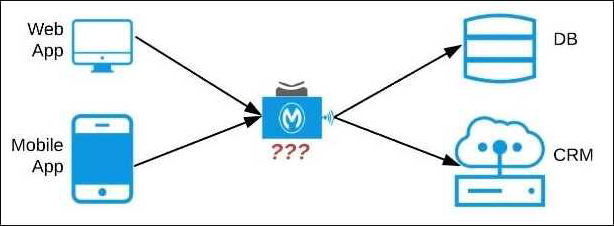
정답:
Explanation:
Lets analyze the situation in regards to the different options available Option: A common Experience API but separate Process APIs Analysis: This solution will not work because having common experience layer will not help the purpose as mobile and web applications will have different set of requirements which cannot be fulfilled by single experience layer API
Option: Common Process API Analysis: This solution will not work because creating a common process API will impose limitations in terms of flexibility to customize API;s as per the requirements of different applications. It is not a recommended approach.
Option: Separate set of API's for both the applications Analysis: This goes against the principle of Anypoint API-led connectivity approach which promotes creating reusable assets. This solution may work but this is not efficient solution and creates duplicity of code.
Hence the correct answer is: Separate Experience APIs for the mobile and web app, but a common Process API that invokes separate System APIs created for the database and CRM system
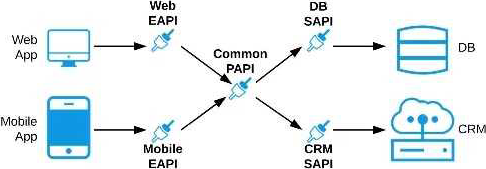
Lets analyze the situation in regards to the different options available Option: A common Experience API but separate Process APIs Analysis: This solution will not work because having common experience layer will not help the purpose as mobile and web applications will have different set of requirements which cannot be fulfilled by single experience layer API
Option: Common Process API Analysis: This solution will not work because creating a common process API will impose limitations in terms of flexibility to customize API; s as per the requirements of different applications. It is not a recommended approach.
Option: Separate set of API's for both the applications Analysis: This goes against the principle of Anypoint API-led connectivity approach which promotes creating reusable assets. This solution may work but this is not efficient solution and creates duplicity of code.
Hence the correct answer is: Separate Experience APIs for the mobile and web app, but a common Process API that invokes separate System APIs created for the database and CRM system
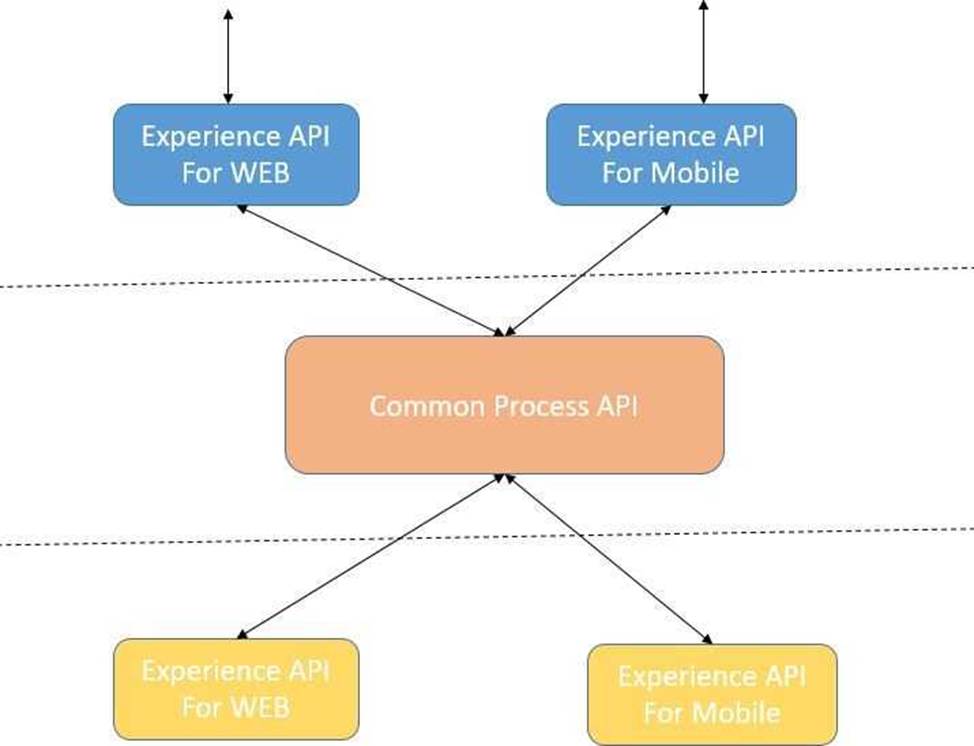
정답:
Explanation:
High availability is about up-time of your application
A) High availability can be achieved only in CloudHub isn't correct statement. It can be achieved in customer hosted runtime planes as well
B) An object store is a facility for storing objects in or across Mule applications. Mule runtime engine (Mule) uses object stores to persist data for eventual retrieval. It can be used for disaster recovery but not for High Availability. Using object store can't guarantee that all instances won't go down at once. So not an appropriate choice.
Reference: https://docs.mulesoft.com/mule-runtime/4.3/mule-object-stores
C) High availability can be achieved by below two models for on-premise MuleSoft implementations.
1) Mule Clustering C Where multiple Mule servers are available within the same cluster environment and the routing of requests will be done by the load balancer. A cluster is a set of up to eight servers that act as a single deployment target and high-availability processing unit. Application instances in a cluster are aware of each other, share common information, and synchronize statuses. If one server fails, another server takes over processing applications. A cluster can run multiple applications. (refer left half of the diagram)
In given scenario, it's mentioned that 'data cannot be shared among of different instances'. So this is not a correct choice.
Reference: https://docs.mulesoft.com/runtime-manager/cluster-about
2) Load balanced standalone Mule instances C The high availability can be achieved even without cluster, with the usage of third party load balancer pointing requests to different Mule servers. This approach does not share or synchronize data between Mule runtimes. Also high availability achieved as load balanced algorithms can be implemented using external load balancer. (refer right half of the diagram)

정답:
Explanation:
* Option B shouldn't be used unless extremely needed, if RAML is changed, client needs to accommodate changes. Question is about minimizing impact on Client. So this is not a valid choice.
* Option C isn't valid as Business can't stop for consumers acknowledgment.
* Option D again needs Client to accommodate changes and isn't viable option.
* Best choice is A where RAML definition isn't changed and underlined functionality is changed without any dependency on client and without impacting client.
정답:
Explanation:
* HTTP/1.1 keeps all requests and responses in plain text format.
* HTTP/2 uses the binary framing layer to encapsulate all messages in binary format, while still maintaining HTTP semantics, such as verbs, methods, and headers. It came into use in 2015, and offers several methods to decrease latency, especially when dealing with mobile platforms and server-intensive graphics and videos
* Currently, Mule application can have API policies only for Mule application that accepts requests over HTTP/1x